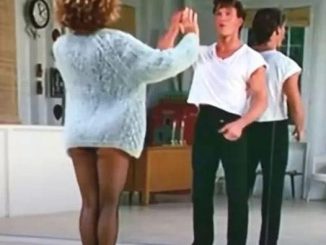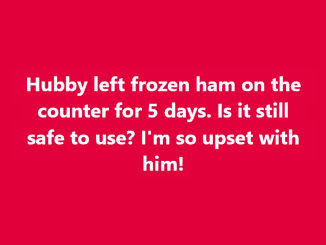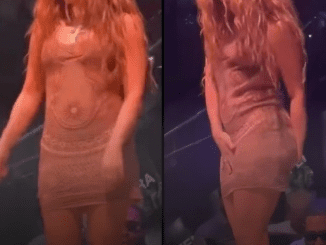There’s something incredibly satisfying about solving a visual puzzle. It’s not just about having sharp eyes—it’s about patience, focus, and a bit of creative thinking. In today’s challenge, you’re invited to test all of those skills with a beautiful forest-themed illustration that hides four specific animals: a horse, a duck, a rabbit, and a bird.
At first glance, this black-and-white forest drawing seems simple. You’ll see trees, grass, a river, a squirrel, a snake, and a few flowers. But look again—there are more creatures cleverly camouflaged in the natural scenery. Your task is to find the four hidden animals, and trust me, it’s not as easy as it looks.
Why Most People Struggle with This Type of Puzzle

One of the biggest mistakes people make with visual riddles is moving too quickly. Our eyes are naturally drawn to bold shapes and familiar outlines, which means we overlook the finer, cleverly disguised elements. In this puzzle, the animals aren’t clearly outlined—they’re formed by negative space, overlapping lines, or natural elements like tree branches and leaves.
Another common error? Focusing only on the obvious. Sure, you might instantly spot the bird perched on the branch or the rabbit in the grass—but don’t stop there. The real challenge is finding all four animals, especially the more subtly disguised ones like the horse.
Step-by-Step Guide to Solving the Puzzle
If you’re still staring at the picture and scratching your head, don’t worry. Let’s walk through a strategic approach to help you discover all four animals.
Start by scanning quadrant by quadrant
Break the image into four parts—top left, top right, bottom left, and bottom right. Search each section thoroughly before moving on to the next. This helps prevent your eyes from jumping around and missing key details.
Video : Can you spot the hidden animal?|Hidden pictures|Brain Teasers|Riddles|Puzzles|Mind Benders
Look for natural outlines
Many of the animals are not drawn with bold lines. Instead, the artist used elements like branches, leaves, or the negative space between them to form shapes. Instead of looking for fully formed animals, look for features—an ear, a tail, or an eye.
Zoom in on suspicious areas
If something looks slightly off—a bend in a tree, an odd leaf pattern—focus on it. These are often the hiding places for the cleverly camouflaged creatures.
What You Should Have Found: The Correct Answers
Here’s where all four animals are hiding:
1. The Bird
Look at the upper-left side of the tree. You’ll find a small bird perched among the branches. It has a clear outline and is the easiest one to spot.
2. The Duck
Look to the right of the main tree trunk, among the plants. The duck’s head and beak are formed by leaves and branches. It’s a little trickier because the head blends into the surrounding foliage, but once you spot the neck, it becomes obvious.
3. The Rabbit
In the bottom-right corner, just above the grass, the rabbit is tucked into the undergrowth. Its long ears and rounded back give it away, though it’s cleverly camouflaged by the surrounding shapes.
4. The Horse
This is the toughest one for most people. The horse’s head is cleverly outlined using the curves of the tree branch extending to the top-right, near the pine trees. You can see the outline of the horse’s face, ear, and mane formed using minimal lines.

What Makes These Puzzles So Effective?
Puzzles like this challenge your brain’s ability to recognize patterns—something known as pareidolia. This is the brain’s tendency to find familiar shapes (especially faces and animals) in random visuals. Artists who design these puzzles use that tendency to hide images in plain sight.
Your brain doesn’t process everything it sees. Instead, it fills in the blanks based on what it thinks should be there. That’s why one person might see the horse immediately, while another may spend ten minutes trying to find it.
Seeing vs. Perceiving: What It Says About You
These puzzles are a fun way to get to know how your brain interprets visuals. If you saw the rabbit or bird first, it might mean you’re good at spotting what’s clear and right in front of you. If the horse or duck caught your eye, you might be more in tune with abstract patterns and subtle clues.
Some people spot all the animals quickly. Others see only one at first, then slowly discover the rest. There’s no right or wrong—just different ways of observing the world.
Did You Find Them All? Share Your Results
Now that you know where the animals are hidden, it’s time to compare. How many did you spot before reading the explanation?
Video : Find Hidden Animals – Can You Spot the Hidden Animals?
Did the horse stump you? Did the bird jump out right away?
Let us know in the comments and tag a friend to see how their skills compare. These puzzles are more fun when shared—and you never know, someone might spot something you missed!
Why You Should Keep Doing Puzzles Like This
Beyond being just fun, these kinds of puzzles help boost mental clarity, pattern recognition, and visual memory. They train your brain to slow down, stay focused, and look beyond the obvious. That’s a skill you can use in real life—whether you’re scanning documents, navigating crowds, or just trying to find your keys.
So the next time you come across a brain teaser or visual challenge, don’t scroll past it. Embrace the puzzle, test your observation skills, and enjoy the thrill of the “aha!” moment.
The forest puzzle may be solved, but the journey of sharpening your brain has only just begun. Keep your eyes sharp, your mind curious, and your sense of humor intact—and you’ll see things others might never notice.


